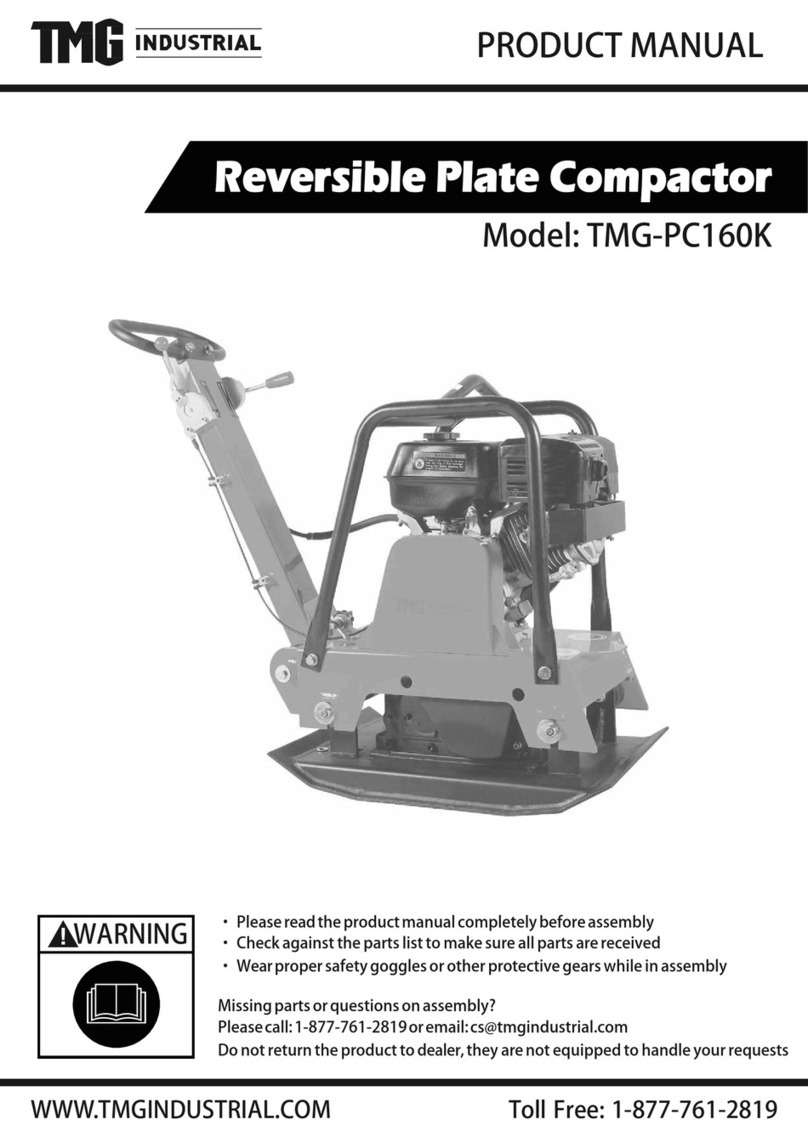This instruction manual describes the proper methods for using the tamping rammer, as well as
simple checks and maintenance. Be sure to read this instruction manual before using the
rammer, in order to get full use of the excellent performance of this machine, to improve your
operation and to perform engineering work effectively.
After reading this manual, store it in a handy location for easy reference.
For details about the engine in this machine, see the separate instruction manual for the
engine.
For inquiries about repair parts, parts lists, service manuals, and repair of the machine, please
contact the shop where you purchased it, our sales office, or the Mikasa Parts Service Center.
In addition, parts lists are available on the MIKASA website at:
http://www.mikasas.com/english/
Though compact and lightweight, this rammer creates a strong impact and you may expect a
large tamping effect on the ground.
It will compact nearly all types of soil, except soft soil that contains too much moisture.
Use this rammer to tamp the ground for creating roads, embankments, and to prepare the
surface to support buildings. It can also be used when burying gas or water lines, and electric
cables.
Do not use this machine on ground that is harder than the machine can handle, or for driving
pilings or tamping rock beds. Furthermore, use of the machine on sloping ground such as the
side of an embankment, may be make the machine unstable and can cause an accident. It can
also result in premature machine wear due to uneven loads on the machine.
Use the machine with confidence for tamping earth and sand, soil, sand, gravel, and asphalt.
Do not use the machine for other type of jobs.
The upper section of the machine functions as a weight and consists of an engine section
guide, a gear reducer section, and reciprocating section. It also accommodates the handle and
the fuel tank sections, which are connected by rubber dampers.
The lower section of the machine which hits the ground, consists of a spring case to engage
sliding motion, a sloping section to allow the machine to tilt toward the front, bellows to cover
the foot, a sliding section, and a protective sleeve.
Power is provided by an air-cooled, 4-cycle, single-cylinder gasoline engine. The output end of
the engine crankshaft is equipped with a centrifugal clutch.
As the engine speed increases, the centrifugal clutch expands and a pinion gear that is a part
of the clutch drum engages a gear in the crank shaft on the main frame. The engine speed is
decreased in order to produce the required force for tamping.
The rotating motion of the main frame crankshaft is converted to a reciprocating motion through
a connecting rod. This reciprocating motion causes the foot to go up and down through a strong
coil spring. The weight of the main body and the strong force from the engine compress the
spring and the foot moves up and down, striking the ground forcefully.
The illustrations and Figures in this manual may be different from the machine you
actually purchased due to design changes and other reasons for improvement.
Application
Warning about incorrect applications and techniques
Structure
Power transmission
1. Preface
2. Applications, Warnings,
Structure and Power Transmission
1
































